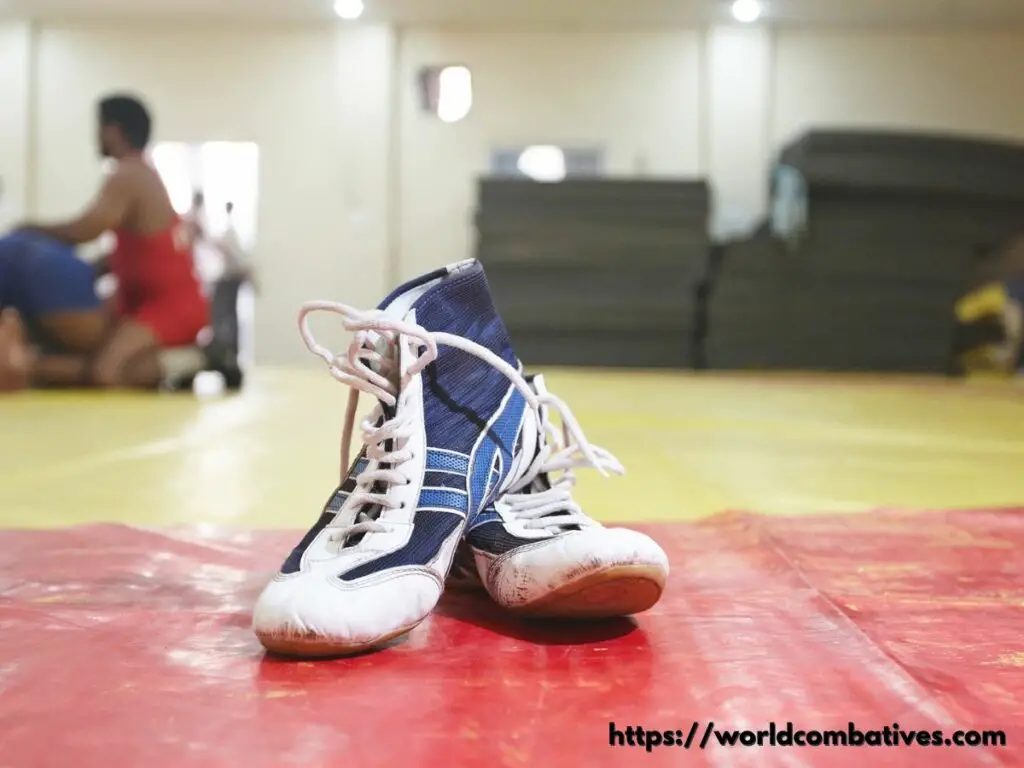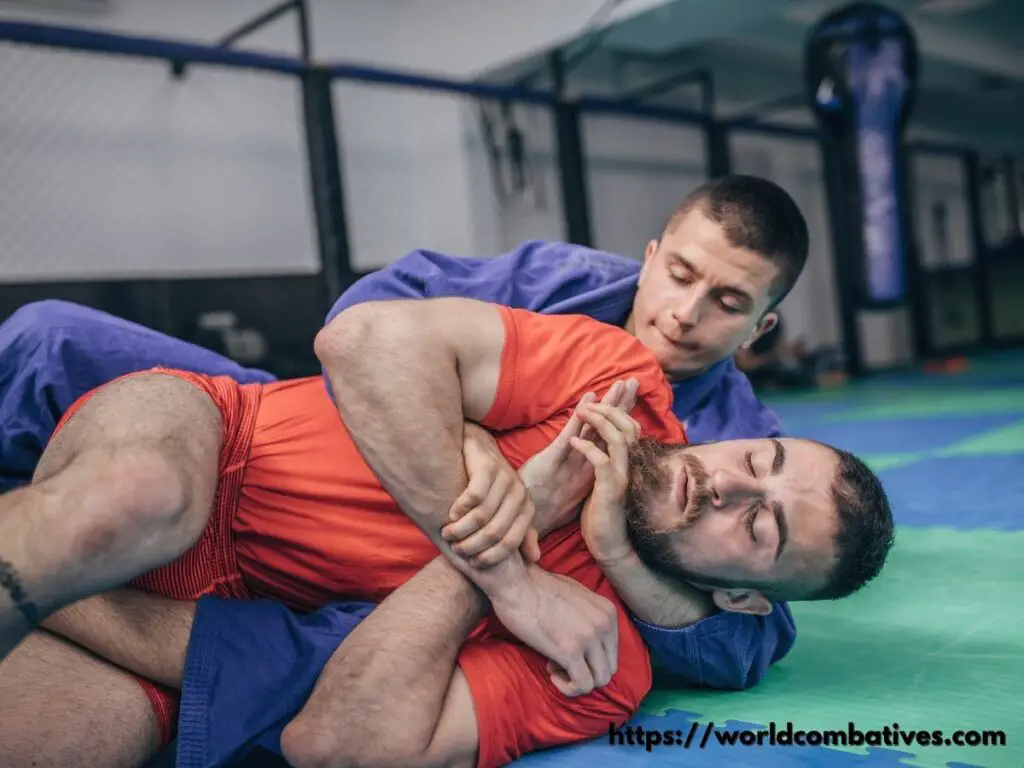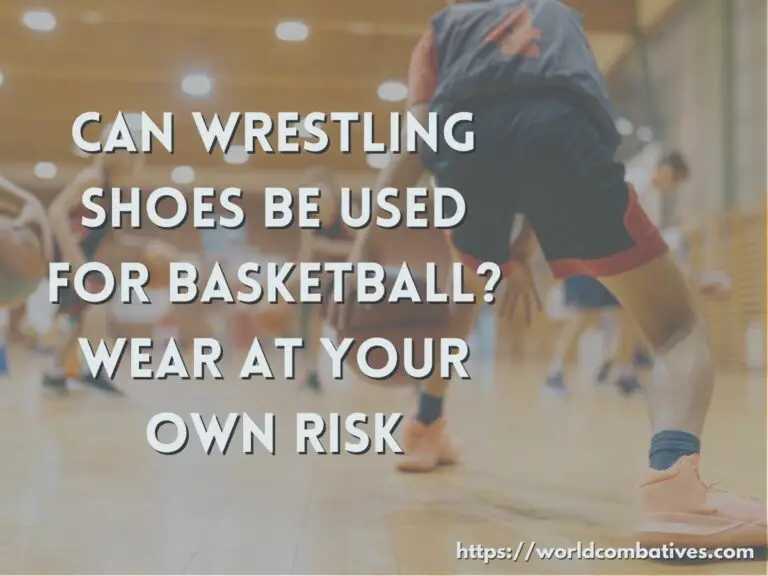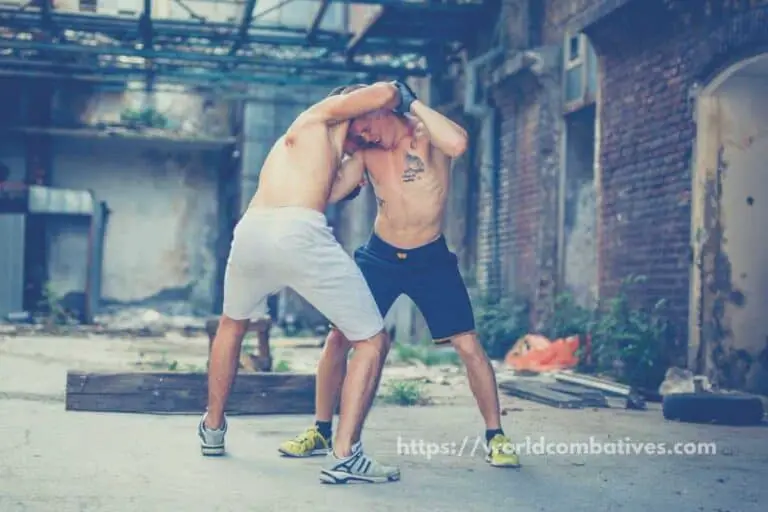Can You Get Ringworms From Wrestling? | Learn How To Prevent It
As a fan of Wrestling, I often wonder about the prevalence of skin infections, like ringworm, among wrestlers due to the close contact nature of the sport. To answer this, we should know the nature of how ringworm is transmitted from one person to another first.
A person can get ringworm from Wrestling via close skin-to-skin contact, which increases the likelihood of catching and spreading skin infection. In fact, it is accounted for 84% of high school wrestlers’ skin infections, according to a survey of qualified sports trainers.
If ringworm is left untreated, it may spread to their teammates and other people, leading to an outbreak. Wrestlers may face difficulty with these infections since it causes them to be disqualified from practice or competition. Therefore, prompt diagnosis and treatment are crucial.
This article will discuss the risk and prevention of getting a ringworm infection in Wrestling.

Do most wrestlers get ringworms?
Most wrestlers are prone to ringworms because close physical contact and skin injuries are inevitable in Wrestling. Furthermore, moisture from sweat due to physical activity is perfect for the growth of fungal infections like ringworms. Thus, a lot of wrestlers get ringworms.
Ringworm is a common skin infection that wrestlers may be at risk of developing. The condition typically appears as a red, itchy rash on the skin and can be found on areas of the body that come into contact with other people or surfaces, such as the scalp, face, and feet.
Wrestlers who come into contact with mat surfaces or share equipment with others may be more likely to contract ringworm. Additionally, wrestlers with eczema, acne or other skin conditions may be more susceptible to developing ringworm.
You may not know this, but ringworm is a prevalent issue among wrestlers. A study conducted between March 2004 and December 2005 on 612 confirmed ringworm cases revealed that Tinea corporis gladiatorum is one of the most common infections among wrestlers.
Proper hygiene and skin care are essential for preventing and managing these skin-related issues in wrestlers.
So now that you have a basic understanding of ringworm, let’s look deeper at why wrestlers have ringworms.
Why do wrestlers have ringworms?
Wrestling is a physically demanding sport that requires intense training and competition. Unfortunately, it also comes with several skin-related issues, including ringworm.
Wrestlers are at risk of developing ringworm mainly because of the close contact and shared equipment inherent in the sport.

During matches and training, wrestlers are in constant contact with mat surfaces and other wrestlers, which can lead to the spread of the fungus.
Additionally, wrestlers often share equipment such as headgear, singlets, and mats, which can also facilitate the spread of the infection.
Another factor that puts wrestlers at risk of developing ringworm is the intense sweating and physical activity associated with the sport.
The constant friction and contact with mat surfaces can lead to skin irritation and infection, while using tight-fitting equipment can cause chafing and pressure sores.
This can make the skin more susceptible to infection and make it harder for the skin to heal once an infection has occurred.
Ringworm infection associated with Wrestling can be prevented when you always keep in mind what are the common risks of contracting it.
So, let’s now discuss the risk factors of ringworm while wrestling.
What are the risks of Ringworm Infection in Wrestling?
The risk of contracting ringworm infection in contact sports like Wrestling boils down to having direct skin contact with a person with ringworm or using shared equipment with other wrestlers.
Here is the list of risk factors for acquiring ringworm infection in Wrestling:
1. Person-to-person contact with ringworm-infected wrestlers.
As Wrestling is a contact sport, wrestlers are in constant close contact with each other during training and competitions. This close contact increases the risk of the fungus being spread through skin-to-skin contact.
The proximity and physical contact of Wrestling also increase the chances of open wounds and abrasions, which can be entry points for the fungus to infect.
2. Sharing of wrestling equipment.
Wrestlers often share equipment such as headgear, singlets, and mats, which can also facilitate the spread of the infection.
3. Enclosed, humid training environment.
Wrestling training often occurs in tight, enclosed, and humid environments, creating an ideal breeding ground for the fungus.
4. Pre-existing skin conditions.
Individuals with pre-existing skin conditions such as eczema or acne may be more susceptible to developing ringworm.
5. Poor hygiene practices.
Not maintaining proper hygiene, such as not showering immediately after training or competition or not keeping wounds and skin irritations clean and covered can increase the risk of infection.
6. Personal items sharing.
Touching items (towels, clothes, etc.) that have been in contact with an infected person could also infect them with ringworm.
It’s important to be aware of these risk factors and to take steps to minimize them, such as practicing good hygiene and skin care, avoiding sharing equipment and personal items, and seeking medical attention if you suspect you have been infected.
Did you know that the wrestling mats you are rolling on could be a source of ringworms? Let’s discuss that next.
Do wrestling mats have ringworms?
There are chances that wrestling mats might have ringworms because of contamination, but it is still highly debated.

Wrestling mats can potentially have ringworm, as the fungus that causes ringworm can survive on surfaces for extended periods.
You see, wrestling mats are in direct contact with the wrestler’s skin during their training. Multiple wrestlers often use them simultaneously, making them a potential breeding ground for the fungus.
So, if a wrestler has a ringworm and comes into contact with a mat, the fungus can be transferred to the mat and potentially infect other wrestlers who come into contact with it.
Now that we know how easy it is to get ringworm from Wrestling, we must know some easy ways to prevent this from happening. Thus, we will discuss some ways on how to avoid ringworms.
How do you prevent ringworm from Wrestling?
The most basic thing you can do to prevent ringworm in Wrestling is to practice good hygiene. This means sanitizing your gear and bathing after every match and practice. This could reduce the likelihood of contracting ringworm infections by a lot.
In short, shower, wash your gear, and sanitize the mats you’ve used as soon as you are done training.
Wrestlers can reduce their risk of contracting ringworm by developing these easy, everyday habits.
USA Wrestling has released a comprehensive, informative guide on wrestling skin infections for wrestlers, coaches, trainers, and parents that details the signs of ringworm infection associated with this sport.
For all wrestlers, the following five hygiene measures are essential:
1. Use an antifungal soap.
After every training session, take a bath with antifungal soap or face wash to avoid getting a ringworm infection.
2. Sanitize your wrestling gear after training.
Another essential thing for basic hygiene is properly washing your wrestling gear. Ensure your headgear, singlets, rashguards, and spats are properly cleaned, as they are designed to absorb sweat.
3. Keep sweat off your feet.
Keeping your feet dry and clean is crucial for avoiding an athlete’s foot. A moist environment is the best ground for fungi to thrive and multiply, so better keep those sweaty feet dry by wiping them with a clean towel or using anti-perspiring foot deodorants.
4. Never share your personal items.
Never borrow a towel from your colleagues or any other person. Always try to bring a fresh towel and avoid sharing it with others.
5. Use protective clothing.
Another preventive measure to avoid ringworm in Wrestling is to use rash guards and spats. In addition to regulating your body temperature, it also makes your skin less likely to come into contact with ringworm if there is little to no exposure to it to others.

Recommended Read: Learn why wrestlers wear sweats during their training here: Why Do Wrestlers Train in Sweats? | Should Wrestler Train in Sweats?
You might be in this article because you are wondering if you could wrestle with ringworms. Well, let’s discuss that while looking at what most experts say.
Can you still wrestle with ringworm?
Most states will allow you to wrestle as long as you visit a doctor and can show that the condition has been treated for at least 72 hours.
It is crucial to start treatment right away if ringworm is suspected.
Treatment includes topical antifungal creams or oral antifungal medications, which should be applied twice daily for 1-4 weeks.
Usually, after three days of topical therapy, athletes can compete again, provided that during practice and competition, they should cover their lesions and wash all gear and towels daily.
Conclusion
Ringworm is one of the most unpleasant things that wrestlers often deal with.
Usually, this infection is inevitable when you’re a wrestler, where you often train in an enclosed, humid environment, share equipment with other players, and use the same training mat during practice.
Though it’s a benign condition, ringworm substantially impacts the ability of participants to compete.
So, it’s better to report the issue as soon as possible and receive adequate treatment.
What’s next? Have you ever wondered why most wrestlers train in sweats? Does it help in their training? Why do they tuck their sweatpants? I created a post discussing that here: Why do Wrestlers train in Sweats?






